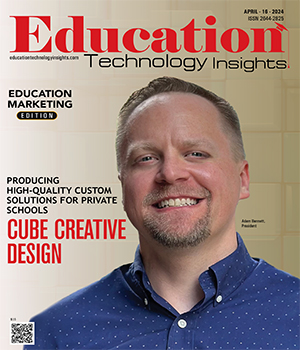THANK YOU FOR SUBSCRIBING
Be first to read the latest tech news, Industry Leader's Insights, and CIO interviews of medium and large enterprises exclusively from Education Technology Insights
How to Find Your Brand's Voice in an Increasingly Tech-Driven World
Dawn Lerman, Professor of Marketing and Executive Director, Center for Positive Marketing, Fordham University
 Dawn Lerman, Professor of Marketing and Executive Director, Center for Positive Marketing, Fordham University
Dawn Lerman, Professor of Marketing and Executive Director, Center for Positive Marketing, Fordham UniversityIn its 2018 campaign, Burger King poked fun at our increasingly tech-driven world with a series of advertisements that it claimed were developed using AIartificial intelligence. While the images in each television spot were what you might expect to see in a Burger King ad—Whopper sandwiches, chicken nuggets tumbling out of the fryer, friends enjoying a meal at a Burger King restaurant—the voice-overs were quite unexpected. Rather than hearing the voice of humans, viewers were entertained by a robotic voice boasting about the “bed of lettuce for you to sleep on” and trying to interest the audience in a chicken sandwich that “tastes like bird.”
Burger King’s ads were widely lauded for their entertainment value and for reminding us that technology cannot replace human creativity. They also emphasized the importance of brands connecting with customers through human voices—both literal voices and figurative ones.
What does it mean for a brand to have a voice, let alone a human voice?
Some brands have a voice in the literal sense of the word, meaning that they speak. A brand’s literal voice can be heard through its spoke-characters—think, for example, of the sweet and gentle voice of the Pillsbury dough boy—or, thanks to voice technology, the branded product itself might speak as in the case Amazon Echo, Apple’s Siri, and Google Maps.
Most brands, however, project their voice through the language used in and across the many types of communication media in which brands appear. To be more specific, the language used across communication media creates a tone of voice. Tone of voice can be thought of as a style that expresses the brand’s attitude. Tone of voice is closely tied not only to a brand’s positioning but also to its personality. For that reason, a well-crafted tone of voice can help ‘humanize’ a tech brand, making it accessible, personable, and relatable.
“Tone of voice is closely tied not only to a brand’s positioning but also to its personality. For that reason, a well-crafted tone of voice can help ‘humanize’ a tech brand, making it accessible, personable, and relatable”
Crafting a brand’s tone of voice requires making deliberate choices about the language used in marketing communications—the specific words, punctuation, sentence structure, linguistic devices such as rhymes, metaphors, and alliteration, and more. Imagining how a brand should ‘talk’ may be difficult at first. To get started, it can be helpful to think of the brand as a person. Specific exercises include:
• Writing a dialog representing the conversation that you would expect to have with the brand were the two of you to meet on the street, at a party, or some other venue.
• Writing a page in the brand’s autobiography, paying particular attention to how the brand tells its story.
• Writing the cover letter that the brand would send when applying for a job.
After completing one or more of these exercises, ask yourself the following questions about the language ‘spoken’ by the brand:
• Would it be believable those familiar with the brand?
• Is it compatible with the personality that prospects and customers expect from your brand?
• Is it consistent with the nature of your brand?
If you can honestly answer yes to all three questions, then you have clearly begun to articulate your brand’s voice.
Weekly Brief
Featured Vendors
Read Also
Goldilocks Regulation
Beyond the Quiz: Redefining Competence in eLearning
Beyond Theory and Into Monday Morning: Enhancing Graduate Programs for Teachers
Safeguarding Students in the Age of Deepfakes: An Educational Imperative
Delivering Excellence in Education through Transformative School Leadership
Curriculum Innovation for Student Success and Institutional Growth

I agree We use cookies on this website to enhance your user experience. By clicking any link on this page you are giving your consent for us to set cookies. More info

























